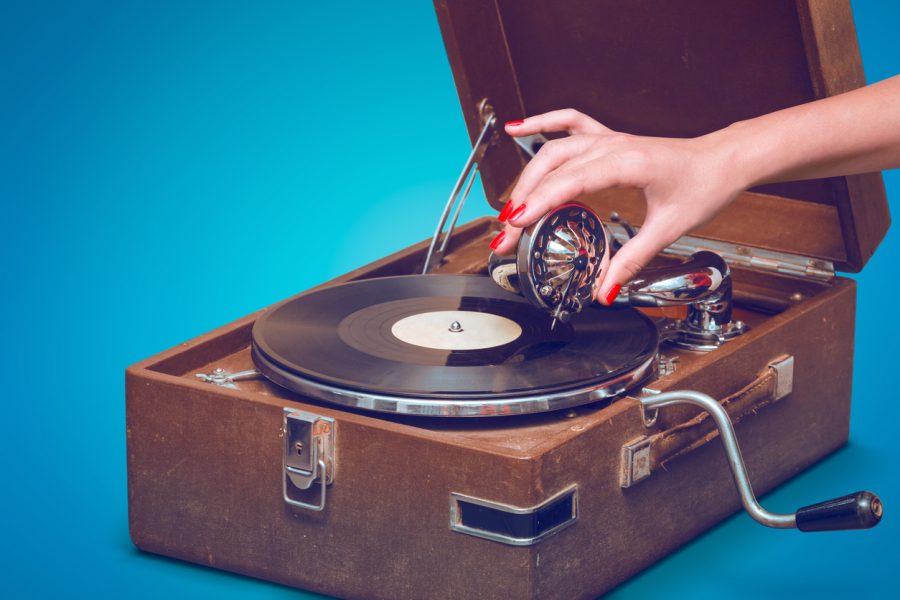Yerington: The vinyl resurgence of my generation
This form of music ownership was on the decline for decades. Yet, within the past 10 years, vinyl has had a tremendous resurgence, especially amongst young adults.
Old portable gramophone with female hand pin-up styled isolated, on blue background with empty space
February 4, 2019
Vinyl records is a medium that is truly peculiar. The form of music ownership was on the decline for decades, and many thought it was even dead and gone. Yet, in the past 10 years, vinyl has made a tremendous resurgence, especially among young adults.
According to a recent Forbes’ study, 1 in 4 people in the 18-24 age group said they’d bought at least one vinyl record in 2016. But the main question is: Why? The medium was on the verge of death and yet has had a tremendous comeback. Now, most people can find records not just at hole-in-the-wall local shops but at huge chain stores such as Target, Walmart, etc.
For a long time, vinyl records were dismissed as simply a hipster’s collectible item. Now, sales have recently reached 16 million units and totaled $395 million in revenue. The art form is no longer restricted to flannel-wearing hipsters. Vinyl records are coming back and may stay for a bit longer.
Artist Jack White has pushed hard to keep the medium not only relevant but also evolving. White has even created his own record and vinyl-pressing company, Third Man Records. The company’s motto “your turntable’s not dead” is a stoic example of its goal in the modern world. Third Man Records leads the way with innovations such as having holographic images in the records, creating records with both matte and vinyl finishes, and playing a record in space.
RELATED: In Their Own Words: The newfound love for Vinyl records from the youth
But White’s company isn’t the only one helping keep up with demand. Last year, Sony Music Entertainment, Warner Music Group, and Universal Music all looked into revisiting their vinyl production after four decades. This shows how vinyl has not only caught the attention of the general population but also of large companies.
Yes, the sales are nowhere near what they were in the 1970s and 1980s, but with an increase of 12 million units since 2007, it’s hard to dismiss this as a quick trend that will go away fast.
I recently wrote an “In Their Own Words” article about the trend. I interviewed four people who owned one or more records and asked them the reasons they buy vinyl records. The aspect of record collecting they all commonly referred to was the way it felt. They all were drawn to the medium because of the feeling of participation they get by listing to music on vinyl.
This sense of ownership and participation is a type of beauty that vinyl records offer listeners. It is debatable that music sounds better through vinyl compared with mp3 or other formats, but the feeling of putting a needle down on a black disk, on which it scratches against grooves, summoning the music that you love, is something that has captured people generation after generation.
Also, it’s pretty exciting to have this huge cardboard poster of an album. With most listeners used to only seeing album art miniaturized on their phone, there’s something about actually holding an album such as Abbey Road in your hands compared to quickly seeing it pop up on a phone.
The generational love of vinyl is something that is interesting to see come back. It shows that this generation is not completely throwing everything away for the newest tech or digital versions. This generation is built on nostalgia, a longing for a time they never encountered but want to know. That’s why vinyl’s death has been put off yet again, hopefully for another decade or more.






